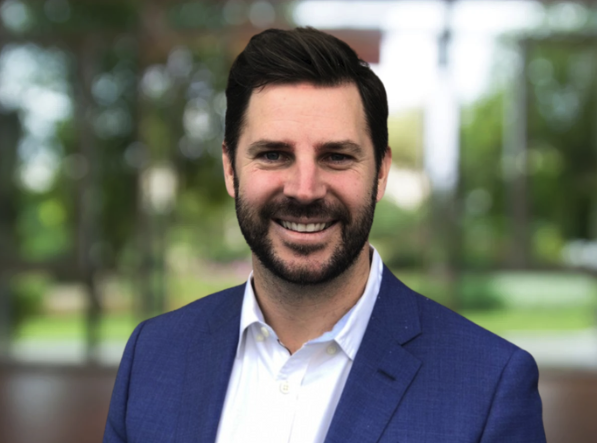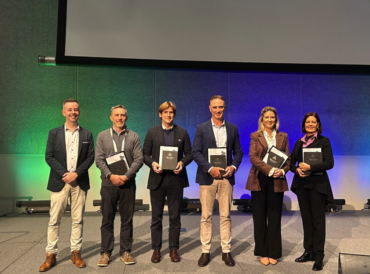By Grant Connors, General Manager Programs at Belgravia Leisure.
For decades, community leisure centres have been defined by their physical space—the gym, the swimming pool, the sports hall. But today, our purpose must go beyond simply providing spaces for fitness. We are not just custodians of exercise venues; we are catalysts for community wellbeing. In an era marked by escalating mental health concerns, rising chronic disease rates, and fractured social connections, our role has evolved. We must transcend the transactional and embrace a transformative role: adopting a whole-system approach, acknowledging the complexity of health and social factors, and working alongside a broad network of allies to drive meaningful change.
The Systemic Nature of Wellbeing
Wellbeing does not exist in isolation. It is shaped by interconnected systems—health, social care, education, urban planning, and economic policy. If we want to create healthier, more active communities, we must work collaboratively to influence upstream factors, ensuring that physical activity is embedded into everyday life and made accessible to all.
The barriers are systemic. To understand them, we must appreciate that certain parts of Australia, New Zealand and the world, have differences in mortality rates and ill health. If you were to get on a train in Sydney at Circular Quay and head out towards Western Sydney, life expectancy may well start to decline. Access, affordability, and trust are all relevant, and what is certain is that we must never impose solutions onto those who are so disenfranchised. Instead, we must engage in meaningful conversations, working closely with these communities to provide them with agency in shaping solutions that work best for their unique circumstances.
This approach aligns with the Eight Investments That Work for Physical Activity, as outlined by Milton et al. (Journal of Physical Activity and Health, 2021) https://doi.org/10.1123/jpah.2021-0452. This framework highlights key strategies that contribute to a healthier society and ensures that physical activity is not only promoted but embedded into daily life.
- Whole-of-School Programmes – Encouraging active schools and physical literacy from an early age.
- Active Travel – Promoting walking, cycling, and infrastructure that supports active commuting.
- Active Urban Design – Creating spaces that encourage movement through parks, footpaths, and cycleways.
- Healthcare Integration – Embedding physical activity into health services and social prescribing.
- Public Education and Awareness – Changing perceptions and behaviour through targeted messaging.
- Sport and Recreation for All – Ensuring inclusive access to community sport and activity.
- Workplace Wellness – Encouraging physical activity within employment settings.
- Community-Wide Approaches – Coordinating efforts across multiple sectors to create an active society.
Our primary role as a sector is not just about increasing participation; it is to create activity opportunities for all. This is not simply about increasing participation; it’s about generating a “wellbeing dividend” – a cascade of positive outcomes that strengthens the entire community.
- Improved physical health: Reduced risk of chronic diseases, enhanced cardiovascular health, and increased overall fitness.
- Enhanced mental wellbeing: Reduced stress and anxiety, improved mood, and increased self-esteem.
- Strengthened social capital: Increased social connections, stronger community bonds, and reduced social isolation.
- Increased community resilience: Enhanced ability to cope with challenges, improved quality of life, and greater overall wellbeing.
Addressing More Than Just Fitness
Community leisure centres are uniquely positioned to address the broader determinants of health. Mental wellbeing, loneliness, social isolation, and lifestyle-related diseases require more than just a place to work out.
Mental Health & Physical Activity
Research consistently shows the positive impact of physical activity on mental wellbeing. Regular exercise reduces stress, anxiety, and depression while enhancing mood, cognitive function, and sleep quality. Leisure centres must integrate activities such as mindfulness-based fitness, group exercise for social support, and referrals from mental health professionals.
Combatting Loneliness
Loneliness is a pressing societal issue, with Ending Loneliness Together research showing that nearly 1 in 3 Australians feel lonely, and 1 in 6 experience severe loneliness. The impacts of loneliness include poorer mental health, increased physical health risks, and higher mortality rates. Leisure centres can play a crucial role in social connection, offering walking groups, community swim sessions, group training, intergenerational activities, and spaces for conversation and support.
Expanding Our Network of Allies
Adopting a systems-thinking approach allows us to leverage a wider network of partners. Too often, leisure centres operate in silos, assuming responsibility for community fitness without engaging the broader ecosystem of stakeholders.
- Healthcare Partnerships: General practitioners, physiotherapists, and mental health professionals are key allies. Exercise referral schemes, social prescribing, and on-site wellness services can bridge the gap between healthcare and recreation. Belgravia Leisure’s Partners in Health initiative has been a key driver of this integration.
- Local Government and Urban Planners: Advocating for active urban design ensures LGAs support movement at every opportunity through walkable neighbourhoods, safe cycling routes, and accessible green spaces.
- Schools and Universities: Embedding physical activity into educational settings helps establish lifelong habits and reduces the burden on health systems.
- Workplaces and Employers: Promoting corporate wellness programmes, gym partnerships, and flexible working arrangements that enable active lifestyles.
- Community Organisations: Leveraging existing networks to reach underrepresented groups and ensure inclusivity.
By expanding our mindset beyond facility-based services, we unlock new opportunities for impact.
Leveraging Upstream Solutions for Change
To shift from reactive service provision to proactive health leadership, we must tackle barriers such as affordability, accessibility, safety, and cultural inclusion.
- Affordability: Offering flexible membership terms, subsidised options, and pay-as-you-go flexibility removes financial barriers.
- Accessibility: Ensuring all spaces and programmes are inclusive, including adaptive sports and exercise for people of all abilities.
- Safety & Cultural Considerations: Creating environments where everyone—regardless of gender, ethnicity, or background—feels welcome.
Policy advocacy is crucial. Leisure centres can influence public funding, urban planning, and healthcare policy by demonstrating our role as a vital component of the wellbeing ecosystem.
Redefining Our Role in the Community
The future of community leisure is not about competing for gym memberships; it’s about delivering wellbeing outcomes. By embracing a whole-system approach, we transition from being just facilities to wellbeing hubs where people move and connect.
Our role is no longer just about the 15-17% of us who have a gym membership; it’s about cultivating healthier, happier, and more connected communities through collaboration, innovation, and a deep understanding of the systems that shape our lives. Our success should not be measured solely by treadmill usage but by the depth of social connections we nurture and the tangible improvements in community health.
The opportunity is immense. The challenge is complex. But the impact is profound. If we embrace this role with intention and strategy, leisure centres can become the heartbeat of healthier, more resilient communities, changing lives.
Together we move more.
- Explore our career opportunities.
- Learn more about our people.




